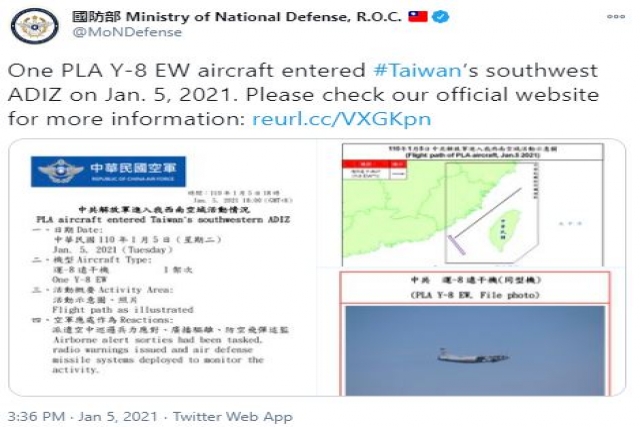Taiwan Defense Ministry Publication "leaks" Images of Locally-made Stealth Detecting Radar

Youth Daily News, a publication run by the Taiwan Defense ministry’s Political Warfare Bureau released images of a secret radar that can detect stealth aircraft- presumably aimed at China’s J-20 aircraft.
The article has since been deleted but not before it caused considerable uproar within the ministry and reportedly angered Minister of National Defense Chiu Kuo-cheng, Taipei Times reported quoting several publications.
The article reported on the Navy 151st Amphibious Fleet’s mission to resupply Magong City in Penghu County. Photographs published along with it depicted a Republic of China Navy landing craft disembarking, at a port in the Penghu island group, a secretive radar system. It contained “highly classified” aspects of modified version of a truck-mounted anti-stealth passive radar system designed by National Chung-Shan Institute of Science and Technology.
The defense ministry was unaware of the breach until U.S. officials contacted Taipei via national security channels. Over 20 officers could receive reprimands or other disciplinary actions over the secrecy breach.
The “leak” could also be a message to China that its aircraft that regularly fly near Taiwan are within the cross-hairs of the Island nation’s defensive systems. Taipei’s defense ministry regularly releases data of overflights by Chinese military aircraft near its air defense identification zone (ADIZ).
Taiwanese forces on the Penghu archipelago operate a long-range radar plus Hsiung Feng II anti-ship cruise missiles and Sky Bow III surface-to-air missiles. The 60,000-strong permanent garrison includes an army brigade with 70 upgraded M-60 tanks and an artillery battalion.
National Chung-Shan Institute of Science and Technology’s Mobile Anti-Stealth Passive Radar System
The radar system, claimed to be able to detect Chinese J-20 stealth fighter, was first deployed in 2018.
In an image displayed at a 2013 Taipei Aerospace and Defense Technology Exhibition, the institute said that the vehicle’s beamforming capabilities could act in combination with active radar or sources to detect aerial targets. The long-distance system’s receivers use a different angle than active radar to detect a target and the absence of radar emissions helps it to evade countermeasures.













